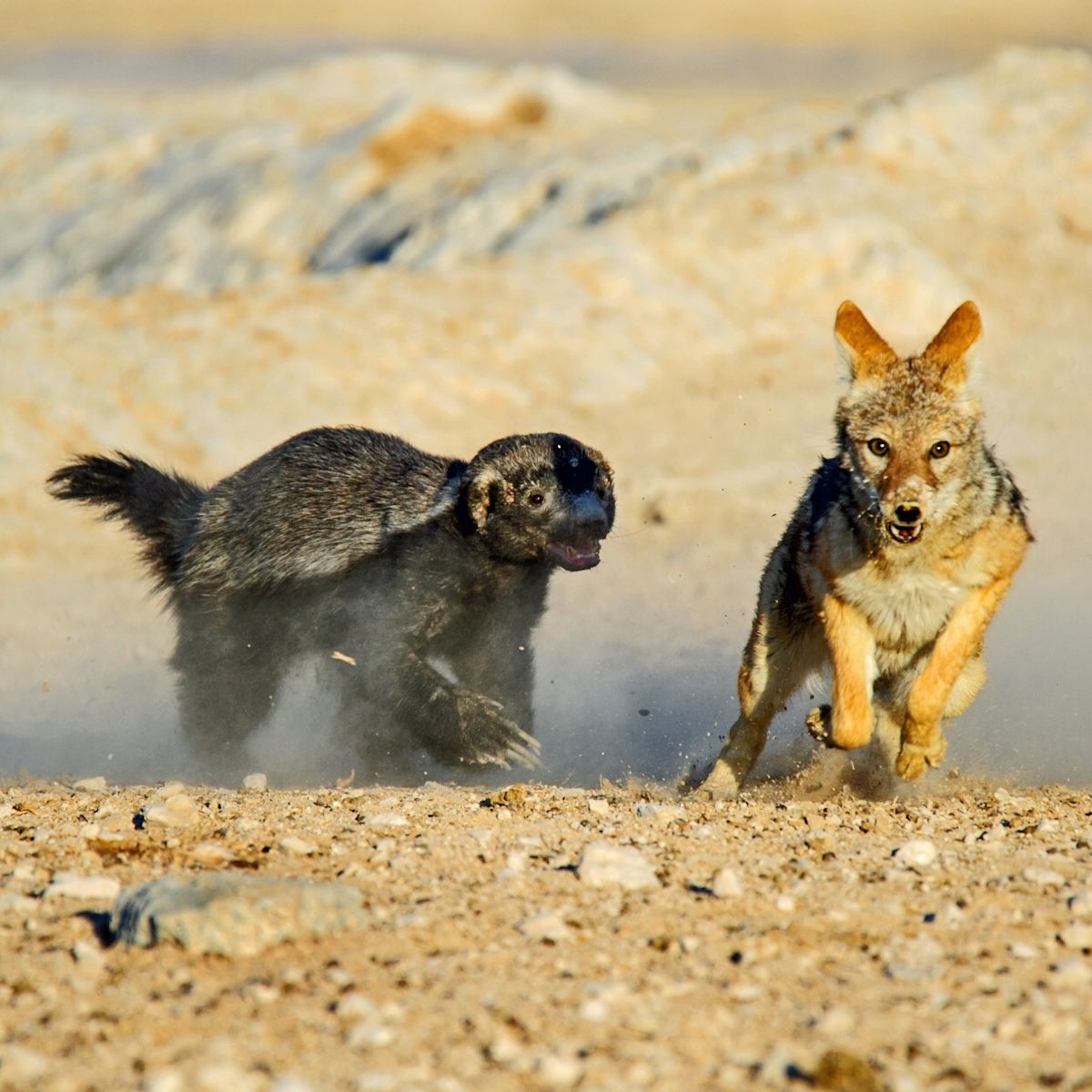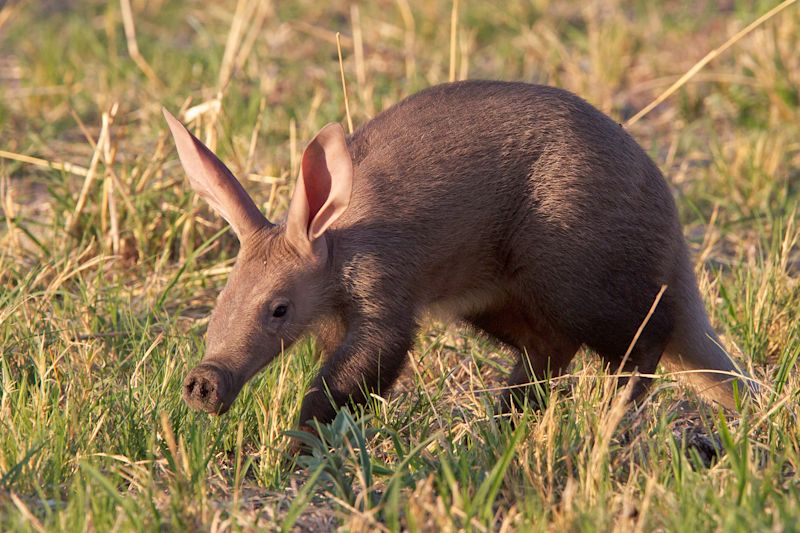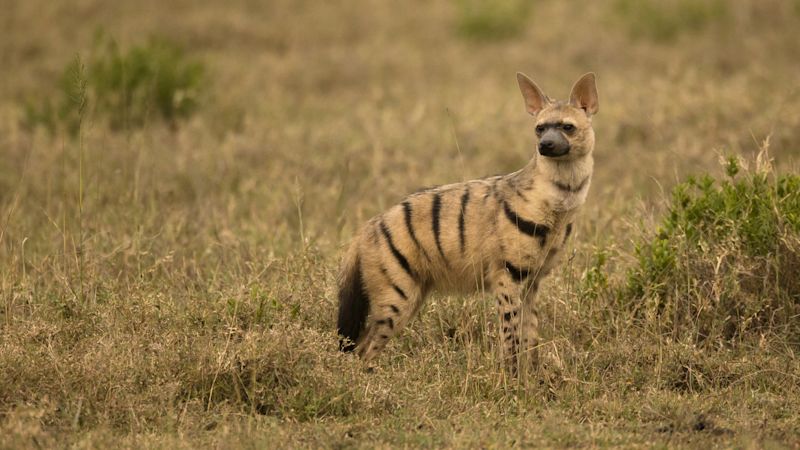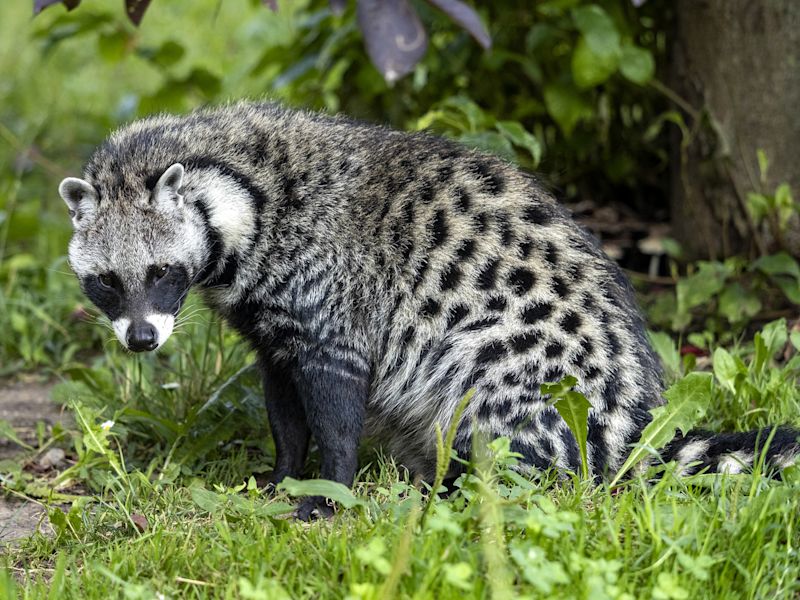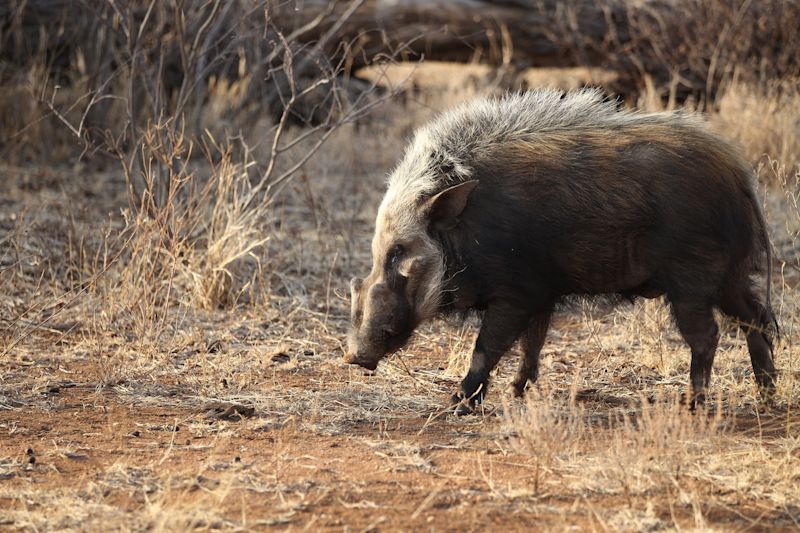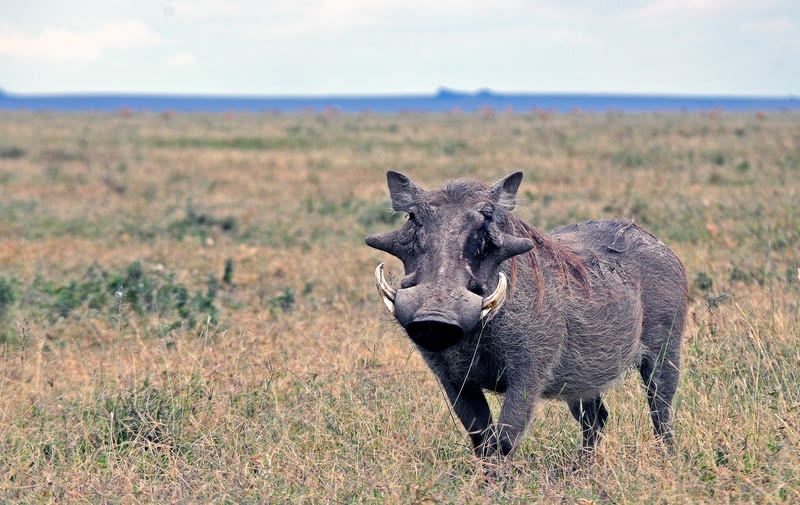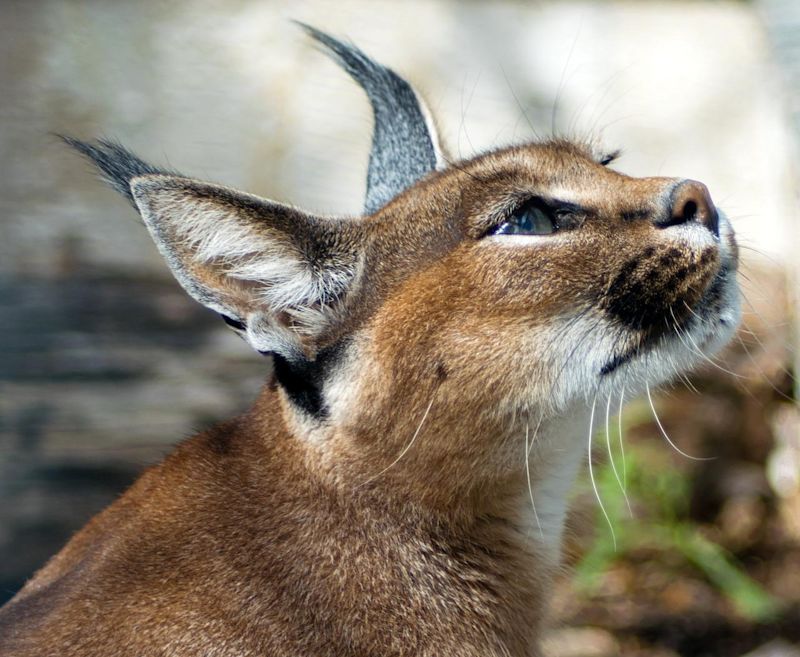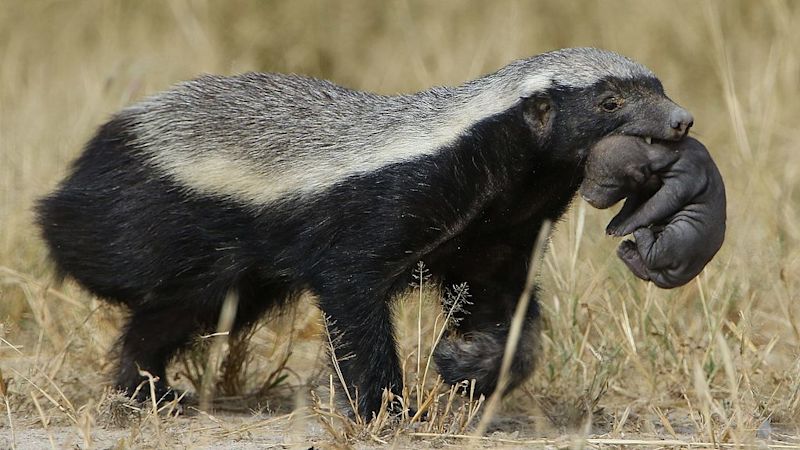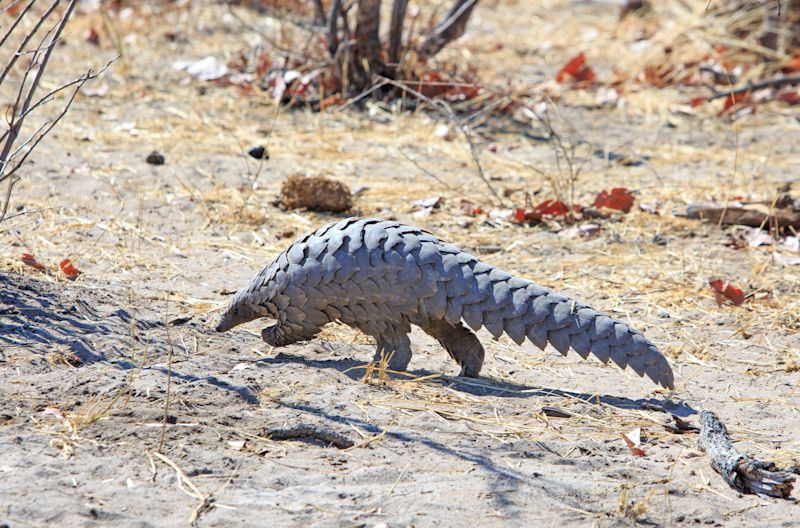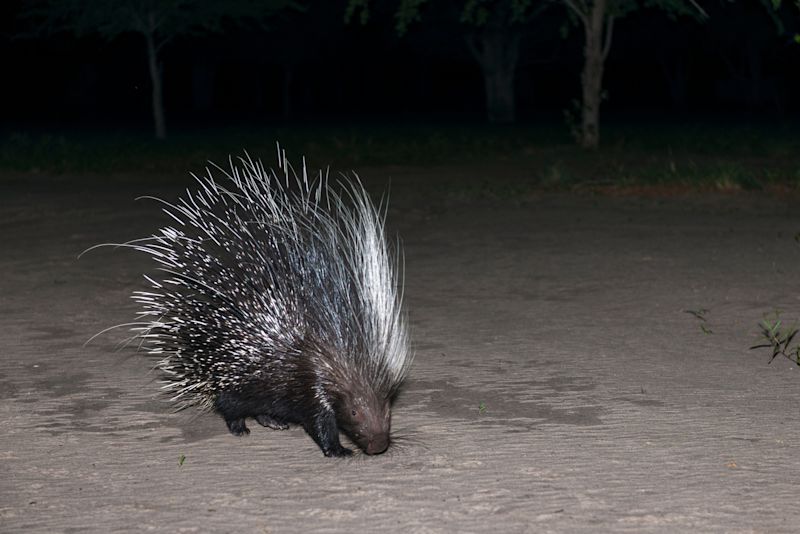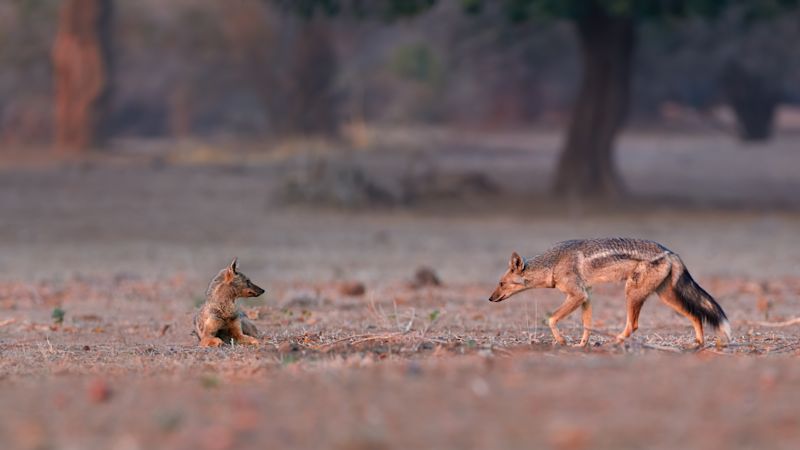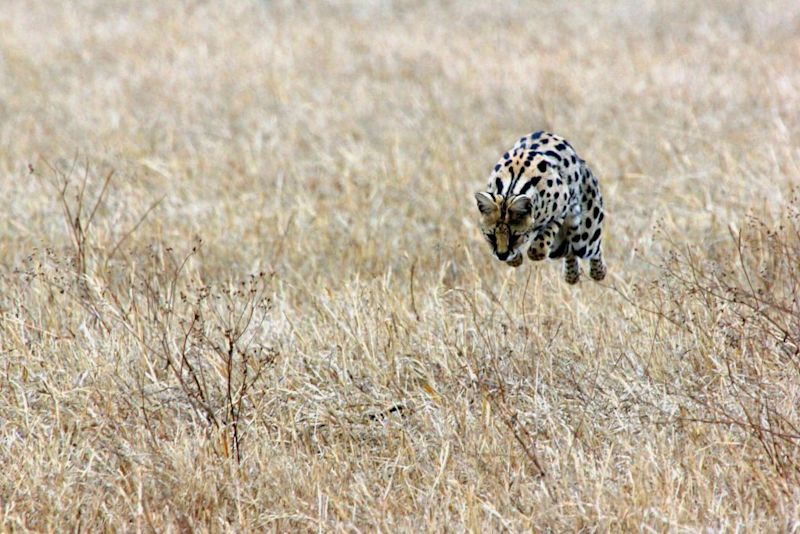We all know about the Big Five of Africa, and some of us may have even heard of the New Big Five. But how many of you know about the Elusive Eleven? And if you do, could you list them all?
Also, have you seen any of them? To have seen even one of them is quite the accomplishment! To have seen them all requires serious commitment.
Most of the Elusive Eleven are solitary creatures. And all are nocturnal. These are two of the primary reasons making them hard to find!
Here they are now: the lesser-known animals that make up Africa's Elusive Eleven in alphabetical order ...
1. Aardvark
An aardvark cub spotted in the Okavango Delta
- Scientific name: Orycteropus afer
- Distribution: Sub-Saharan Africa
- Habitat: Pretty much anywhere save swamp forest
- Diet: Insectivore
The aardvark is a medium-sized, solitary animal that feeds almost exclusively on ants and termites. The tip of its snout is highly mobile. And they use their long, strong claws to tear open termite mounds.
The aardvark sleeps in a burrow. Its name is Afrikaans and actually means 'earth pig' or 'ground pig', because of its burrowing habit and its vague resemblance to a pig.
Aardvarks live in burrows. They can dig extremely quickly and will sometimes dig a burrow as a means of escape from a predator.
Given their solitary and nocturnal nature, you can understand why it's not easy at all to spot an aardvark on an African safari! It really deserves to be one of the Elusive Eleven.
2. Aardwolf
An aardwolf in Tanzania's Serengeti National Park
- Scientific name: Proteles cristata
- Distribution: Southern and eastern Africa
- Habitat: Open plains and bushland
- Diet: Insectivore
It might not surprise you to learn that aardwolf is also an Afrikaans word, and means 'earth wolf'. But while the aardwolf is in the order of carnivora, it's an insectivore, eating termites and larvae.
In fact, a grown aardwolf can eat as many as 250,000 termites in a night! It has a long, sticky tongue, which helps it to lap all those tasty termites. Said tongue has adapted so as not to be hurt by termite bites.
Another name for the aardwolf is the termite-eating hyena, which is a helpfully descriptive name.
3. African civet
The main threat to civets is not lions, but humans
- Scientific name: Civettictis civetta
- Distribution: Most of sub-Saharan Africa
- Habitat: Savannah and forest
- Diet: Omnivore
For many of us, the black patches around the eyes of the African civet are reminiscent of the racoon.
The dorsal crest on the back of the African civet is another distinguishing marker. When threatened, the dorsal crest is raised to present a larger profile.
While the civet isn't endangered, it's hunted in some places in West Africa for its meat and fur. And it has actually been hunted for centuries because the secretion of its perineal glands is used in perfumes. Animal rights groups are trying to end this inhumane practice.
4. African wildcat
The African wildcat doesn't look too dissimilar from a domestic cat
- Scientific name: Felis lybica
- Distribution: Most of Africa as well as parts of the Arabian Peninsula and the Middle East
- Habitat: Pretty much anywhere
- Diet: Carnivore
The African wildcat looks pretty similar to your tabby cat, and that's because they're part of the same animal family. It's very similar to the European wildcat, but has shorter hair and a less bushy tail, among other things.
The African wildcat actually meows all of its life like a domesticated cat, but it doesn't direct its meows to humans but rather to the environment.
The African wildcat can run up to 80 km (50 mi) per hour to catch prey. Interestingly, it's average litter size is only one or two kittens.
5. African bushpig
African bushpigs can reach up to 100 cm at the shoulder
- Scientific name: Potamochoerus larvatus
- Distribution: Eastern Africa and bits of southern and central Africa
- Habitat: Varies, but needs dense cover and water
- Diet: Omnivore
The African bushpig belongs to the Suidae (swine) family, which consists of pigs, boars and hogs. Thus its males are called boars, its females sows, and its babies piglets (or shoats). A group of bushpigs is called a sounder.
African bushpig piglets are absolutely adorable, having brown and yellowish stripes. These fade as they get older, and the animal gets darker in colour.
Bushpig vs warthog
Warthogs have large 'warts' growing out the sides of their faces
Bushpigs are easy to confuse with warthogs. They're related, after all. It might help you to remember that Pumba is a warthog. Can you picture him? Warthogs have, as the name suggests, large, pointed chunks of flesh (or 'warts') growing out the sides of their faces. They also have horns. Bushpigs don't have either of these features.
What bushpigs do have are long dorsal crests, which warthogs don't.
6. Caracal
Caracals are beautifully striking cats
- Scientific name: Caracal caracal
- Distribution: Most of Africa save the Sahara and central rainforest
- Habitat: Savannah, semi-desert and some forests
- Diet: Carnivore
This beautiful wild cat is recognisable by its large ears with thin black tufts by the tips extending into sharp points. It also looks like it has eyeliner on! Individual coats can range from reddish-brown to yellowish.
Caracals are related to other small cat species like cheetahs, which means they can't roar, but they can purr!
Caracals are known to sometimes enter cities (in this way they're similar to foxes in Europe). They've been seen and photographed in and around Cape Town and its beaches many times, for instance. This is because they're highly flexible in terms of behaviour.
7. Honey badger (or ratel)
Honey badgers usually give birth to one cub at a time
- Scientific name: Mellivora capensis
- Distribution: Sub-Saharan Africa
- Habitat: Anywhere that isn't true desert
- Diet: Omnivore (but mostly carnivore)
- Active: Nocturnal (but diurnal during cold and dry months)
Most of us, if we know just one thing about honey badgers, is that they are incredibly strong and fierce! Honey badgers are fearless, and if escape is impossible, they'll attack anything, even lions, elephants and buffaloes! You simply don't want to corner a honey badger.
The honey badger only comes up to the knee of a grown man, but it should be treated with the respect and distance you'd give to a fully grown bull elephant!
Something you might not know about badgers is how good they are at digging. They can dig a burrow in hard ground within 10 minutes.
The species gets its name from its tendency to party crash beehives to eat honey and larvae.
8. Pangolin
The pangolin is critically endangered
There are four species of pangolins in Africa:
- Giant ground pangolin (Smutsia gigantea) in parts of central and west Africa
- Temminck's ground pangolin (Smutsia temminckii) in parts of north, east and southern Africa
- Long-tailed tree pangolin (Phataginus tetradactyla) in central Africa
- White-bellied tree pangolin (Phataginus tricuspis) in central Africa and coastal west Africa
All pangolins are covered almost entirely in scales except for their undersides. They curl up into a tight ball when threatened to the protect the vulnerable belly.
Pangolins (also called scaly anteaters) are insectivore mammals. They're the only mammals wholly covered in scales.
Pangolins are nocturnal, although the long-tailed pangolin is also active during the day. They have great hearing and smell, and use these to find termites, as their eyesight is poor. Similar to aardvarks and aardwolves, they have long, strong claws for breaking down ground and vegetation to get at prey, and have long tongues for licking up said prey up.
Trading in pangolins is illegal, but sadly it does still occur. Pangolin meat is a delicacy in parts of Asia, and their scales are used in traditional medicines. It's the most endangered of the Elusive Eleven animals.
9. Porcupine
This Cape porcupine was seen in the Kalahari Desert in Botswana
There are three species of Old World porcupine in Africa:
- Cape porcupine (Hystrix africaeaustralis), which lives in southern Africa
- North African porcupine (Hystrix cristata), which lives in non-desert parts of North and East Africa
- African brush-tailed porcupine (Atherurus africanus), which lives in lowland rainforest in central and western Africa
A type of rodent, the porcupine's closest relative is the hedgehog. But it's bigger and has longer quills than the hedgehog. And while hedgehogs are cuddly, porcupines most certainly are not!
All three species are nocturnal herbivores (although occasionally they'll scavenge).
Female porcupines deliver litters of one to four pups, and the pups' quills are soft when born. They then harden within two weeks. We know you wanted to know about that. 😉
As you can see from the scientific names above, the African brush-tailed porcupine is quite different to the other two species in some respects. For instance, the Cape and North African porcupines are strictly terrestrial, whereas the brush-tailed species is very adept at climbing trees. The latter is also much smaller than its counterparts.
When a porcupine is relaxed, its quills (or spines) lie flat. When it's alarmed, they become erect and greatly increase the size of its outline. Clever design! But no, they can't shoot them at predators.
10. Side-striped jackal
The standing jackal here allows you to see the side stripe
- Scientific name: Canis adustus
- Distribution: Large parts of sub-Saharan Africa
- Habitat: Usually wooded areas with water
- Diet: Omnivore
Side-striped jackals are attractive canines that have brownish legs and greyish torsos. Up close you can see a feint stripe of darker fur on each flank. A telling identifier of the species is the bushy black tail with a white tip.
These jackals tend to live only three to four years in the wild. They're preyed upon by lions, leopards and hyenas, and farmers sometimes poison them. Pups are also preyed upon by eagles. But in spite of their formidable predators, side-striped jackals aren't endangered.
11. Serval
Servals have the largest ears of any cat
- Scientific name: Leptailurus serval
- Distribution: Most of sub-Saharan Africa
- Habitat: Predominantly savannah but also other areas with water
- Diet: Carnivore
The serval is a long, slender wild cat with a reddish-brown pelage dotted with black spots. It has a thick neck, small head, and short tail. It also has striking black-and-white markings on its ears, but these can be hard to see from far away.
Servals, like caracals, are not strictly nocturnal. They're also sometimes crepuscular, meaning they hunt at twilight.
It's believed that the white spots on a serval's ears play a role in communication.
So there you have the Elusive Eleven of the African safari. Did any one or two in particular catch your eye or spark your curiosity? You're unlikely to see them without a concerted effort, but it can be done!
Seeing the Big Five is a great goal for the nature-loving traveller, but setting your sights on the Elusive Eleven is a bucket-list wish of a different ilk. We wish you all the best if it's made it onto your list, and let us know if we can help with planning your next African safari adventure!
